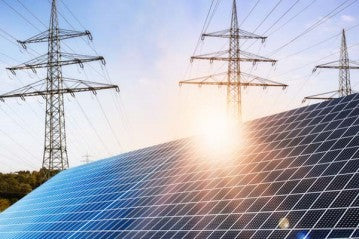
In an era where sustainability and self-sufficiency are gaining momentum, going off-grid with solar power has become an enticing option for many individuals. By harnessing the abundant energy from the sun, you can liberate yourself from traditional electricity sources and embrace a greener lifestyle. However, determining the size of the solar system needed to go off-grid can be a daunting task. In this blog post, we'll guide you through the process of evaluating your energy needs, understanding available solar technologies, and ultimately, selecting the right size solar system to power your off-grid journey.
Understanding Your Energy Needs
Before embarking on your off-grid adventure, it's crucial to assess your current and future energy consumption. Take stock of your household appliances, lighting, and other electrical devices. Consider how your energy needs might change over time, accounting for new additions or upgrades. Additionally, don't forget to factor in seasonal variations, as energy usage can fluctuate with weather conditions and daylight hours.
Evaluating Available Solar Technologies
When it comes to solar power, you have various technologies to choose from. Photovoltaic (PV) systems, which convert sunlight directly into electricity, are the most common choice for residential off-grid setups. Alternatively, Concentrated Solar Power (CSP) utilizes mirrors or lenses to concentrate sunlight and generate heat, which can then be converted into electricity. Understanding the pros and cons of different solar panel types and battery storage options will help you make informed decisions about your off-grid system.
Determining the Size of Your Solar System
To determine the size of your solar system, you need to calculate your daily energy consumption. Consider both the average and peak usage scenarios to ensure your system can handle high-demand periods. Solar panel efficiency plays a crucial role here, as it affects the amount of energy your system can generate. Keep in mind that losses and inefficiencies are inherent in any system, so accounting for them is essential to avoid underestimating your requirements.
Factors Affecting System Sizing
Several factors influence the sizing of your solar system. First and foremost, your geographic location and solar resource availability play a vital role. Regions with abundant sunlight will require smaller systems compared to areas with limited sunlight. Seasonal sunlight variations and angles should also be considered to accurately size your system. Additionally, assess the availability of roof or ground space for solar panel installation, as this will impact the number and orientation of panels.
Assessing Off-Grid System Components
To achieve a fully functional off-grid solar system, you must consider various components. Solar panels, responsible for capturing sunlight, come in different types, including monocrystalline, polycrystalline, and thin-film. Charge controllers regulate the flow of energy from solar panels to batteries, while battery banks store excess energy for use during low sunlight periods. Inverters convert DC power from the batteries into AC power for your household needs.
Consulting with Professionals
While it's possible to design and install your own off-grid solar system, seeking professional advice is highly recommended. Energy consultants and solar professionals have the expertise and experience to guide you through the process, ensuring your system meets your needs efficiently and safely. Their knowledge can also help you navigate local regulations and permitting requirements, making the installation process smoother.
Financial Considerations
Determining the size of your solar system is not just about meeting your energy needs—it's also about balancing costs and savings. Estimating the initial investment required for purchasing and installing the system is essential. However, it's equally crucial to consider the long-term cost savings and potential return on investment (ROI) from reduced or eliminated utility bills. Financial incentives and policies provided by governments can further enhance the affordability of going off-grid.
Conclusion
Going off-grid with a solar system is a remarkable step towards energy independence and environmental stewardship. By understanding your energy needs, evaluating available technologies, and considering various factors, you can determine the right size solar system for your off-grid aspirations. Consulting with professionals and exploring financial incentives will ensure a smooth transition and maximize the benefits of your solar investment. Embrace the power of the sun and take control of your energy future with a thoughtfully sized solar system.
Remember, going off-grid is not just about powering your home sustainably—it's about embracing a greener lifestyle and becoming a part of the clean energy revolution.
Related articles: Off Grid Solar System—Everything You Need to Know

0 comments